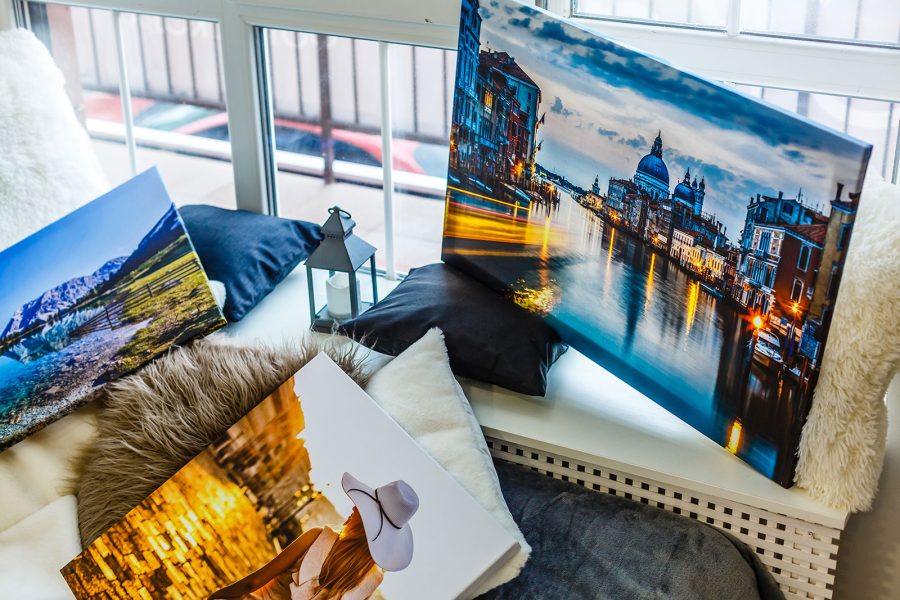Selling Photography Prints: Making Money from Photos

Selling photography prints is probably the first way that photographers explore when turning professional. But it’s not only professionals that can do this; hobbyists can easily support their pasttime by learning how to sell photography prints. It can be daunting at first, but fear not as it is worth the effort to start reaping the rewards of your hard work.
I am a professional nature photographer nowadays, but I first started by selling photography prints back in 2009. I’m not pretending that I was shifting thousands of prints and touring the world with exhibitions by any means. But to support my much-loved hobby of photography, I began to sell prints of my best photos to save up for new bits of equipment.


It’s no secret that as photographers we are dedicated to our craft, and so being able to earn from our portfolios is a good reward for the hours put in.
Let’s take a look at some ways that you can start selling photography prints, and things to be aware of before you begin.
Things to consider when selling photography prints
Before you press the print button, it’s important to plan out your approach to your new venture. Even if you’re not planning to turn professional, some degree of a roadmap for what you want to achieve is essential.
Open vs limited edition
You’re probably familiar with the idea of a limited edition print from the world of paintings and drawings. However, this can be applied to photography too.
Limited edition prints are photos which will only be run a fixed number of times. They’re often hand-signed and will be numbered. If your work is collectable, this will increase the value of the print.
It’s also worth noting that particular numbers can be more valuable than others (e.g. the first print numbered 1/100 could fetch a more attractive price point). However, this is not overly applicable here and is probably best ignored unless you are a famous photographer already.
Open edition prints are limitless. You can print as many as you wish, and in whatever format. You don’t need to say that prints are open edition either, but if they aren’t “limited” then they are by definition “open”.
I have toyed with both approaches throughout my career, and I much prefer to sell open edition photography prints. I am not a fine art or highly sought-after photographer on the worldwide stage, and so the idea of buying a limited edition print from me would appeal to few people.
Consequently, open edition is the way forward for me as I feel that making my work limited editions would very much limit me in the future. This approach may resonate with you too, in which case that is the better choice.
The caveat to this is that if you’re trying to sell your work in galleries, it can sometimes be more attractive to the venue to be displaying and selling limited edition photos.
You could always benefit from the best of both worlds, and choose to sell some images as open edition and others as limited. The choice is yours, and it’s always worth experimenting to see what works best for you.
Choosing a price for your photography prints
Pricing your work for the first time can be tricky. There are several things that will help you determine the correct pricing structure for your prints. The ideal price point will not undervalue your work, but will also not cause your potential customers to baulk at the price tag.
First off, think about where you are selling your work. We’ll look at the specifics of avenues for making sales in a moment, but where you’re selling photography prints will determine the clientele you have at your disposal.
If you find yourself selling in a high-end gallery downtown, then your prices will be a lot higher than the next photographer who is selling their photos at a Christmas market.
Those frequenting certain spaces will often expect to pay a premium and a higher price tag can even make a work more sought-after. Although of course, the photo itself must be excellent and attractive to a buyer in the first place.
Now chances are that you’re not looking to sell in an upper-market gallery just yet. If you were, you probably would not need to read this article after all. The most common avenues will be online sales through your website, or markets, craft fairs, and similar events.
So how do you price for this? It also depends on where you live and the demographic of those your work is exposed to. If you’re selling at markets, you can look at other photographers there and gauge the price points that they have settled on.
Personally, selling in the UK markets, I would sell a 16-inch print framed for £90. The cost to me was £35, although likely this has gone up since then. Online, I’d price the print at £120. There are plenty of photographers exceeding these costs, sure, but this was the area I settled on in the north of England.
If you’re just starting out, then doubling your money is a great place to begin when selling photography prints. After that, you can begin to increase your prices and look at how your sales figures react to it.
Printing at home or using a printing lab
If you’re looking to reduce your cost of production to the absolute minimum, then printing at home can be the best way of doing this. But that does not mean running prints off on basic photo paper on the family printer.
The paper and inks you use matter. After all, the product produced by a professional printing lab is completely different to what a standard home printer outputs.
So, investing in a professional home printing solution is essential if you’re going to go down this route. Good papers and inks will cost more, but they make for a better final product that lasts longer over time.
If you’re looking for your first photo printer, then the Canon Pixma Pro 200 is a good place to start.
We’ve also got an in-depth guide to printing your own photos which is definitely worth reading if this sounds like the option for you.
The most popular option, and what I use myself, is to work with a professional printing lab. To break even on the cost of a home printer, you’ll need to sell quite a few prints in the first place when you consider the costs of ink etc. By using a lab, there is no big initial investment needed.
It also means that you know you are getting the “best of the best” if you work with a reputable lab. You can call them up and ask for an explanation as to their printing process. What printing method and what papers they use, and any bespoke options you want to look at.
When choosing a lab, it’s often best to first look locally. Having that personal line of communication is very valuable. You can also ask around and see who photographers you know use, and get recommendations that way.
I like to fulfil my own orders. This means that I will order prints from the lab, allowing me to check them over at home and prepare them. Once the print has my personal “stamp” of approval, I’ll send it off to the customer.
However, there are services out there that will fulfil orders for you if you want a more hands-off approach. The most well-known portfolio website for selling photography prints is probably Zenfolio. They integrate seamlessly with a number of photo labs around the world, and any orders placed on your website are automatically printed and sent to the customer without your involvement.
Where to sell photography prints
Now you’ve got your product sorted, you need to start selling! We’ve already mentioned some ways above, but let’s look at them in a bit more detail.
1. Selling on your website
Every photographer should have a website, and making your photos available for sale on it is the easiest place to start. Anyone looking at your website is already interested in you and is probably the easiest to convert into hard cash.
My approach is not to go for the hard sell. I like to view my website as primarily a place to display my portfolio, with the purchasing of prints as a secondary focus.
Often, portfolio sites are not geared up very well for converting sales. They usually have the shop separate from the portfolio gallery. With the two integrated, customers can purchase prints from you with the click of a button beside a photo.
Again, the best example I know of this is Zenfolio. It is designed with a focus on selling photography prints, so it is made as easy as possible for the customer.
2. Markets and craft fairs
When I first started selling photography prints, markets and craft fairs were my bread and butter. Doing the Christmas market circuit each season was a highlight of my year for the business.
But there are markets and fairs available all year round in almost all towns around the world. You pay up-front for a table and set up shop for the day with your wares.
You are surrounded by other artists and crafters, and the public that visit these events is often looking for more personal, “homemade” gifts that you don’t find on websites like Amazon or the high street. Consequently, this is the ideal person to sell photo prints to.
3. Galleries
I have sold in galleries before, but I tend to find their commission rates far too high to make it the primary focus of my photography business. Don’t be surprised if you’re looking at 40-50% commission on a sale.
You tend to be able to command a higher sale price in a gallery, though, but after the commission that may not be much different from other avenues.
I am of course talking of the more local, smaller galleries than the prestigious venues you’ll find in Mayfair in London. If you’re displaying in those, then you’re probably selling limited edition prints for over £1,000 and aren’t too bothered about the commission rates.
You can also hire gallery spaces. This means there is an initial investment for you, but you subvert the commission and likely keep all of the sale price for yourself. For the business-savvy, this can sometimes be a good option if you have something of a “following”.
In conclusion
Starting out in selling photography prints doesn’t have to be a big, scary undertaking. Keep things simple at first and work to expand your photography business.
Remember, you don’t need to be a professional photographer to sell prints and anyone can start to monetise their work if they wish to.
If you’re looking for more guidance, make sure to download our eBook Breaking Into Business which will help you to skip a lot of the learning curve.
Good luck!









